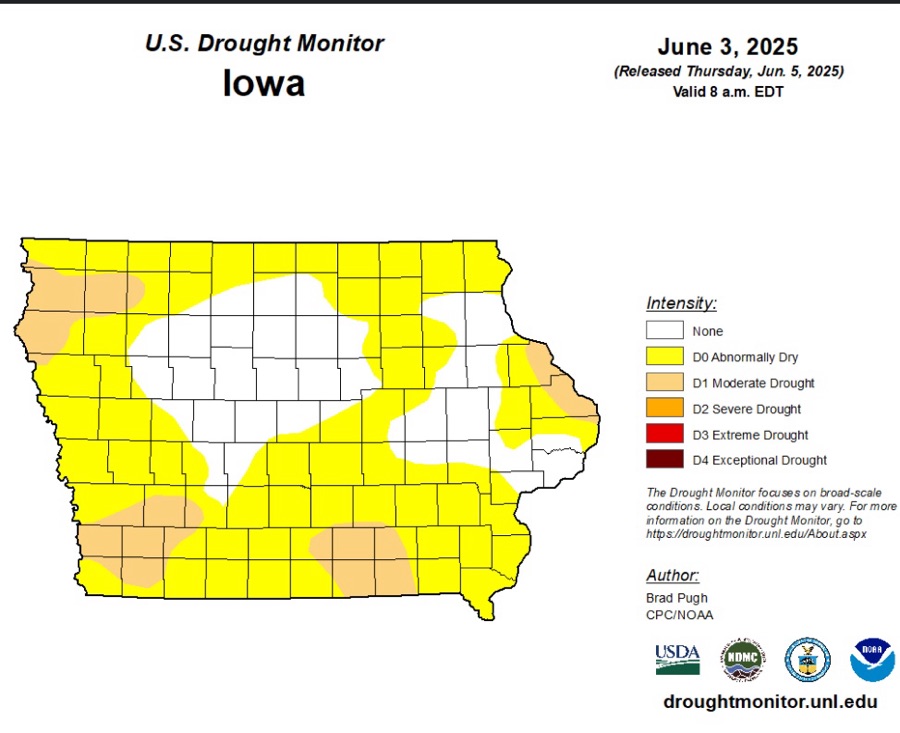**DES MOINES – Drought conditions have intensified throughout Iowa, with below-normal rainfall recorded in May, as detailed in the latest Water Summary Update released by the Iowa Department of Natural Resources (DNR).**
Following an unusually dry month of April, May saw a continuation of reduced precipitation levels across the state, exacerbating drought and abnormal dryness. While early rain events initially brought some stability, decreased rainfall later in the month contributed to worsening conditions. The statewide average precipitation for May was recorded at just 2.80 inches, which is significantly lower than the normal by 20.04 inches. The average temperature during this period was 60.0 degrees, slightly above the normal.
By the end of May, Iowa’s Drought Plan highlighted deteriorating conditions statewide, with the exception of central Iowa. Western Iowa is now under a drought watch, while the remainder of the state is categorized under normal drought status. According to the U.S. Drought Monitor, over 80% of Iowa is facing abnormally dry or drought conditions.
The National Weather Service’s outlook for June projects an equal probability for above, below, or near-average precipitation, along with an increased likelihood of above-normal temperatures. Warmer air, capable of retaining more moisture, may exacerbate drought concerns if rainfall continues to fall short of averages.
“Despite receiving above-average rainfall in March and near-average levels in April, the low precipitation in May has worsened drought conditions, particularly in western and southeastern Iowa,” stated Jessica Reese McIntyre, Environmental Specialist with the DNR. “Western Iowa is currently under a drought watch as significant D1 drought conditions prevail.”
For an in-depth look at Iowa’s water trends, refer to the Iowa DNR’s report accessible at [http://www.iowadnr.gov/watersummaryupdate](http://www.iowadnr.gov/watersummaryupdate). This report is collaboratively prepared by Iowa DNR, the Iowa Department of Agriculture and Land Stewardship, IIHR—Hydroscience and Engineering, the U.S. Geological Survey, and the Iowa Homeland Security and Emergency Management Department.



